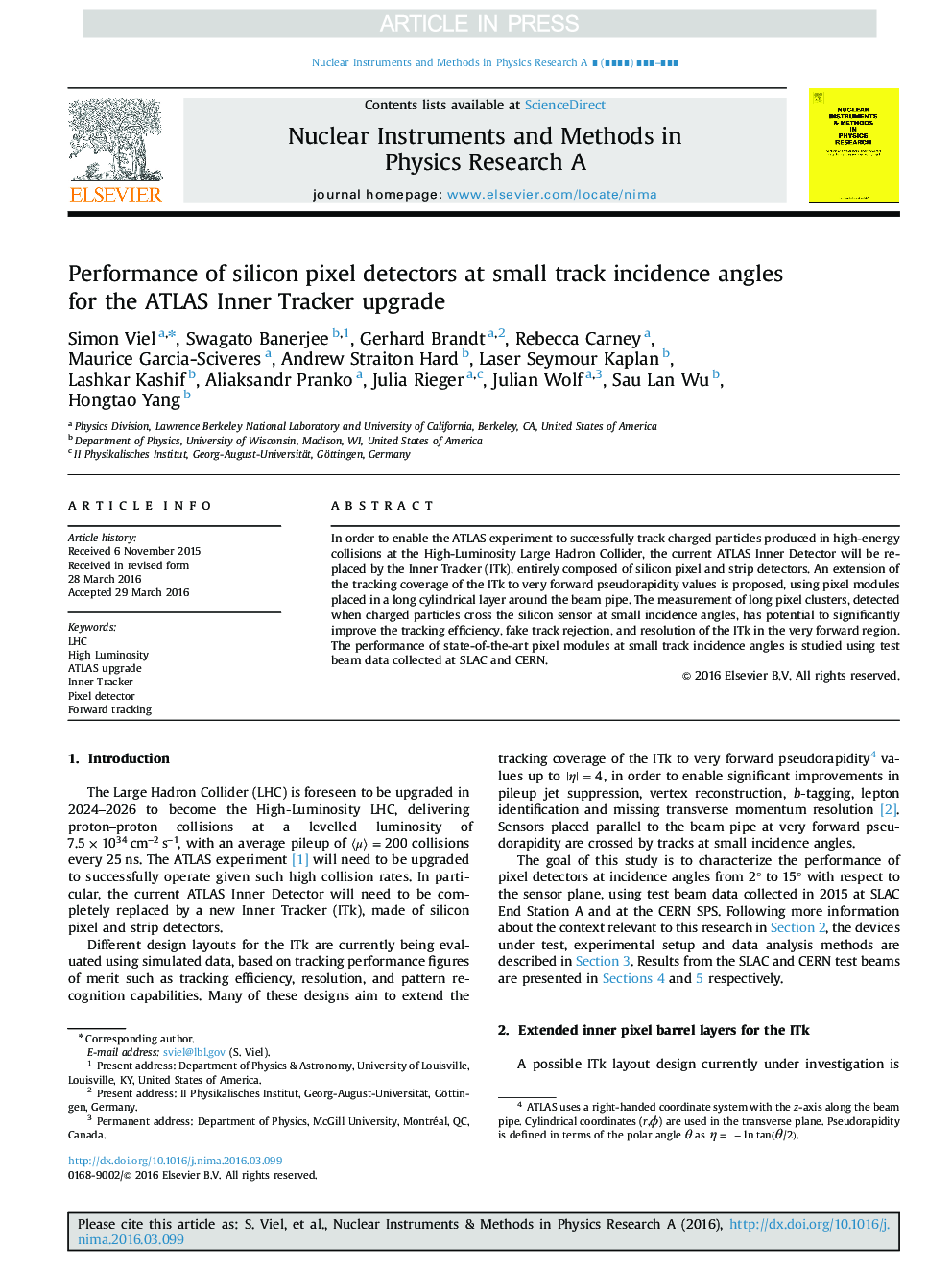| Article ID | Journal | Published Year | Pages | File Type |
|---|---|---|---|---|
| 8168884 | Nuclear Instruments and Methods in Physics Research Section A: Accelerators, Spectrometers, Detectors and Associated Equipment | 2016 | 6 Pages |
Abstract
In order to enable the ATLAS experiment to successfully track charged particles produced in high-energy collisions at the High-Luminosity Large Hadron Collider, the current ATLAS Inner Detector will be replaced by the Inner Tracker (ITk), entirely composed of silicon pixel and strip detectors. An extension of the tracking coverage of the ITk to very forward pseudorapidity values is proposed, using pixel modules placed in a long cylindrical layer around the beam pipe. The measurement of long pixel clusters, detected when charged particles cross the silicon sensor at small incidence angles, has potential to significantly improve the tracking efficiency, fake track rejection, and resolution of the ITk in the very forward region. The performance of state-of-the-art pixel modules at small track incidence angles is studied using test beam data collected at SLAC and CERN.
Related Topics
Physical Sciences and Engineering
Physics and Astronomy
Instrumentation
Authors
Simon Viel, Swagato Banerjee, Gerhard Brandt, Rebecca Carney, Maurice Garcia-Sciveres, Andrew Straiton Hard, Laser Seymour Kaplan, Lashkar Kashif, Aliaksandr Pranko, Julia Rieger, Julian Wolf, Sau Lan Wu, Hongtao Yang,
